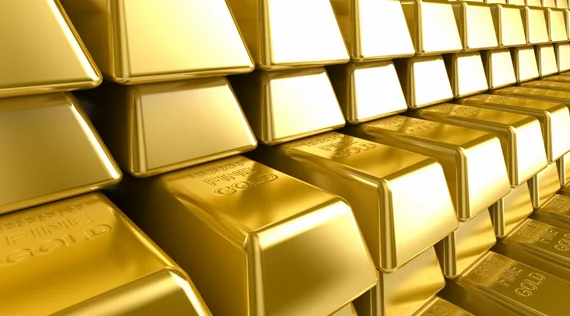
SEATTLE (Scrap Monster): The demand for gold in Q2 this year, followed the trends from the previous quarter, says Gold Demand Trends Report for Q2 2016 released by the World Gold Council (WGC). The investment demand in H1 touched record highs driven by geopolitical and economic concerns. The gold prices climbed further higher during the quarter. The high price of gold has taken its toll on jewellery demand.
Gold Supply
The total gold supply in Q2 amounted to 1,146.6t, significantly higher by 10% when compared with the supply of 1,041.7t recorded during Q2 2015. Supply from recycling increased sharply by 23% over the previous year to 327.7t. Mine supply rose 5% during the quarter. The gold mine production totaled 786.9t, essentially flat over the previous year. Canadian mine output increased, whereas output from Mongolia and Indonesia witnessed declines.
ETF Demand
According to WGC, the inflows into Exchange-Traded Funds (ETFs) remained exceptional during Q2 2016. ETF inflows totaled 579.2t during the initial six-month period of the year. The value of gold-backed ETF AUM increased by +69% (US$38.1bn) in the first half of 2016 to reach US$93bn, their highest level since Q3 2013.
Investment Demand
Investment demand of 1,064 tonnes (t) accounted for almost half of overall gold demand during the first six months of 2016. The investment demand recorded exceptional growth during the quarter, 16% higher than the previous half-yearly high in 2009. Interestingly, for the first time on record, investment remained the largest component of gold demand for two quarters in a row. The western demand for bars, coins and ETFs remained robust during the quarter. A number of factors turned the attention of the western investor community towards gold. The demand for US gold Eagle coins has jumped 84% so far this year. UK’s Royal Mint too has registered sharp rise in profits
Jewellery Demand
The total demand for jewellery in Q2stood at 444.1t. This was the lowest quarterly total since Q2 2010. Jewellery demand in H1 2016 fell by 185.5t from the previous year, on account of weakness in China and India- the key key jewellery markets of the world. The jewellery demand during Q2 2015 had totaled 149.4t.
India did not experience the expected bounce back in jewellery demand in the second quarter. Although Akshaya Tritiya sales provided a brief boost to demand in May, this was insufficient to prevent a severe Q2 contraction. The national strike by jewellers which had effectively closed the market for six weeks, came to an end in mid-April. Lower spending by rural Indians was another blow to demand. The rural population accounts for more than half of India’s jewellery demand.
Gold jewellery demand in China was similarly weak.The Q2 demand dropped 15% to 143.5t. The gold jewelry demand in the country during H1 totaled 322.5t, the lowest levels since 2012. Relatively high volatility in gold prices affected consumer confidence, WGC noted.
Demand across the Middle East remained weak. The demand in Egypt hit all-time low of 5.3t. On the contrary, demand in Iran grew by 10% during the quarter to 8t.
The US jewellery demand in Q2 was marginally higher by 1% over the previous year at 25.9t. The demand for the initial six-month period of the year totaled 48.6t. European jewellery markets remained relatively subdued during the first half of the current year.
Official gold holdings
Central bank purchases on a net basis totaled 76.9t during the second quarter of 2016, down sharply by 40% over the year. The year-to-date net purchases totaled 185.1t. World official gold holdings at the end of June this year totaled 32,800t. The official gold holdings by Russia have increased by 38.4t during the quarter. China (+25.9t) and Kazakhstan (+9.8t) too reported increase in gold reserves during the quarter. On the other hand, Jordan, Belarus and Ukraine turned net sellers of gold during Q2. Continued central bank purchases reaffirm that gold is still considered as an important reserve asset.
| Copper Scrap View All | |
| Alternator | 0.32 (0) |
| #1 Copper Bare Bright | 3.76 (-0.01) |
| Aluminum Scrap View All | |
| 356 Aluminum Wheels (Clean) | 0.73 (0) |
| 6061 Extrusions | 0.64 (0) |
| Steel Scrap View All | |
| #1 Bundle | 460.00 (-15) |
| #1 Busheling | 480.00 (-15) |
| Electronics Scrap View All | |